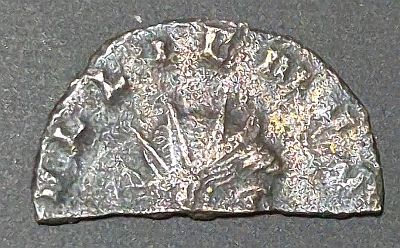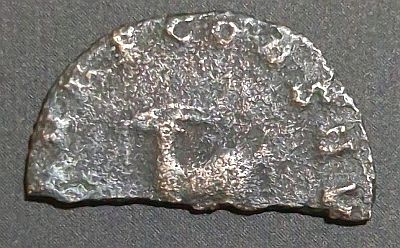Cutting coins to give change goes back much further than medieval England:

This coin was issued under Gallienus. The obverse is very similar to the Gallienus Stag I posted previously. Indeed, this Antoninianus is from exactly the same series, and features an antelope:

As well as being cut in half, this coin is just generally more worn than the other one. I wanted to share it because it is interesting in its own right, as a Roman coin which appears like it may have been deliberately cut in half. Coins like this are often considered inferior, but it may be that it was deliberately done, much like the medieval English half penny here. Cutting could be done by anyone, for any purpose. The fact that cut coins of almost every Roman Emperor have been found, suggests that there may well have been a deliberate method to it. Of course, in this case, it may also just be that someone hit it with a plow unintentionally while it was buried. We’ll never know for certain.
In the case of medieval English coins, the reason is known to be to give change. Was that also the case centuries earlier in Rome? It’s definitely a possibility. What do you think? Share your thoughts in the comments below.


Leave a Reply